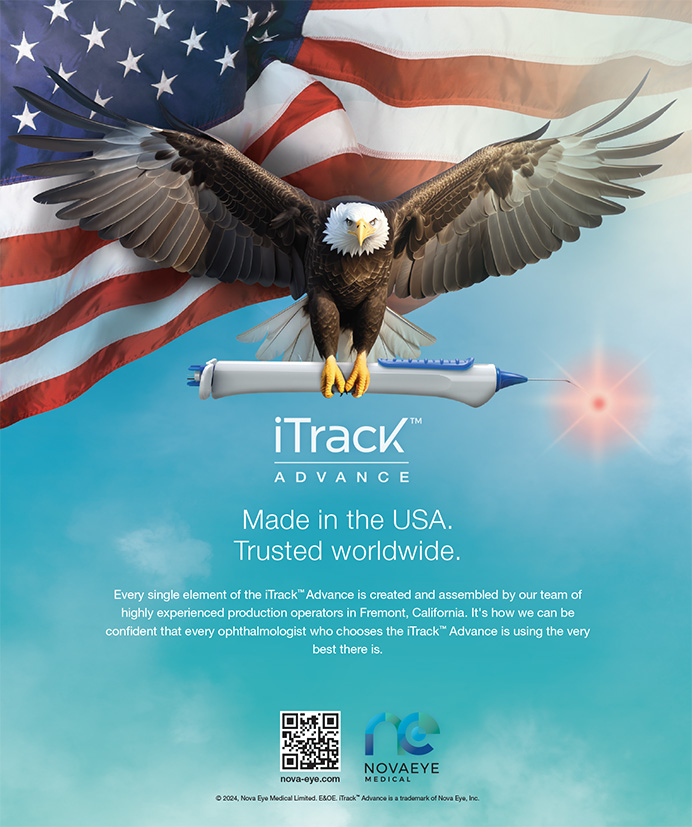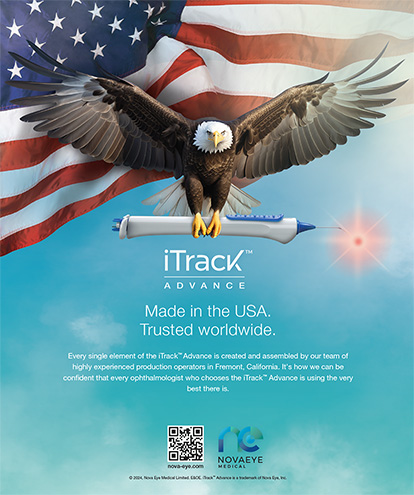Cover Stories | Mar 2006
The Future of Customized Cataract Surgery
Value-added refractive cataract surgery is a win-win situation for surgeons and patients.
John A. Vukich, MD
Modern cataract surgery is a refractive procedure that can offer patients spectacle independence and optimal uncorrected vision. Surgeons can combine monofocal IOLs with wavefront-driven ablations to achieve high-quality visual results. It is new-technology IOLs, however, that have ushered in a new era of cataract surgery. Today, ophthalmologists are redefining the endpoint of cataract surgery, which can include the correction of ametropia. This option is well suited to maturing baby boomers, who are often willing to pay for upgrades to enhance their lifestyle.
The advent of the new-technology IOLs that are not covered by Medicare, and are thus an out-of-pocket expense for patients, has given rise to a consumer-driven market that is familiar to refractive surgeons but perhaps not to cataract surgeons. In order to satisfy patients who are now purchasing a vision “service” with their own funds, physicians should be prepared to offer refractive enhancements. A practice's rate of enhancements may be as high as 30% because of a patient's unsatisfactory near visual acuity or his need for accurate distance vision in at least one eye.
GREAT EXPECTATIONS
Cataract surgeons who provide dispensing services have some familiarity with the retail concept involved in offering new-technology IOLs. Patients who pay for their glasses will return for some correction or restitution if they are not perfectly satisfied. Similarly, refractive cataract patients will demand good and/or improved UCVA postoperatively. For these reasons, surgeons must be able to make adjustments if the IOL power calculation was slightly amiss, and they should also offer to correct preexisting astigmatism.
BIOPTICS
Astigmatic correction can be challenging, and new-technology IOLs do not address the problem. One-third of the patients undergoing cataract surgery have 1.00D or more of preexisting astigmatism and will require some adjustment either intra- or postoperatively to achieve satisfactory UCVA. To that end, cataract surgeons can offer patients several options.
The first is an astigmatic correction with limbal relaxing incisions or astigmatic keratectomy (Figure 1). Surgeons can offer to perform this simple procedure at the time of cataract surgery for a reasonable fee.
The second option is customized laser vision correction. The patient may select a package combining cataract surgery and LASIK or Epi-LASIK. This option includes a standard monofocal IOL (usually covered under insurance programs). Six weeks after lenticular surgery, patients with preexisting astigmatism undergo customized wavefront-guided laser ablation targeting plano to optimize their vision. The refractive procedure is not covered by Medicare.
The third option is a premium package of a new multifocal IOL such as the Rezoom (Advanced Medical Optics, Inc., Santa Ana, CA) or Acrysof Restor (Alcon Laboratories, Inc., Fort Worth, TX) or the Crystalens accommodating IOL (Eyeonics, Inc., Aliso Viejo, CA) and a refractive enhancement, if necessary. This article focuses on multifocal IOLs. The latest multifocal lenses reduce or eliminate patients' dependence on spectacles and are associated with a low incidence of halos. Hyperopes with cataracts are the best candidates for these lenses.
WIN-WIN
Packaging bioptics with wavefront-guided customized ablation is an attractive option to patients and an easy transition for cataract surgeons who already offer LASIK. (Partnering with a refractive surgeon may be an alternative for ophthalmologists who concentrate exclusively on cataract surgery.) This approach has been successful in my practice. Although many of my patients do not originally intend to choose a new-generation multifocal IOL, a large number come to recognize their value when provided with the aforementioned tiered offerings.
Combining new-technology IOLs with refractive enhancements, when necessary, allows cataract surgeons to better serve their patients while improving their own economic situation.
John A. Vukich, MD, is Assistant Clinical Professor at the University of Wisconsin in Madison. He is a consultant for Advanced Medical Optics, Inc., and STAAR Surgical Company. Dr. Vukich may be reached at (608) 282-2002; javukich@facstaff.wisc.edu.


